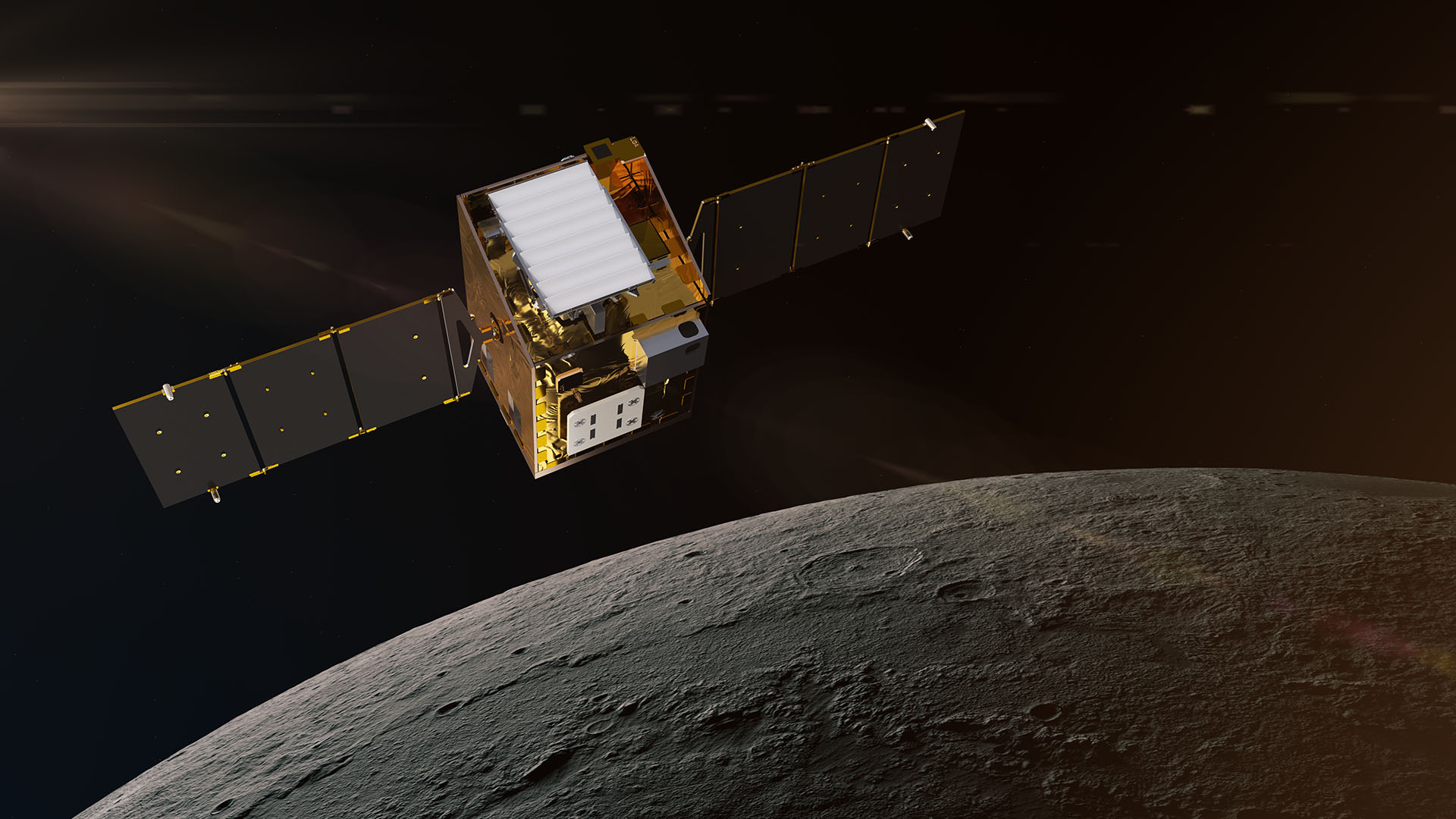
NASA hasn't given up on Lunar Trailblazer yet.
The 440-pound (200-kilogram) probe went silent a day after its Feb. 26 launch atop a SpaceX Falcon 9 rocket. Shortly after liftoff, the mission team determined that Lunar Trailblazer was spinning slowly and running low on power, as it could not orient itself to harvest enough sunlight to charge its batteries as planned.
More than two months have passed since that rather dire assessment, but NASA is still working to revive the orbiter — and it will keep doing so for another six weeks.
"The mission team's modeling indicates that the lighting conditions from May through mid-June are favorable to provide enough sunlight on the spacecraft’s solar panels to recharge the batteries to an operational level and potentially regain command of the spacecraft," NASA officials wrote in an update on Wednesday (April 30).
"The mission team has determined that, if the ability to command the spacecraft can be reestablished, the propulsion system is thawed and the instruments are operable, it may be possible to return the spacecraft to an elliptical lunar orbit and complete its lunar science objectives," they added.
The mission team knows Lunar Trailblazer's precise position thanks to ground-based tracking, NASA officials said the update. If contact is successfully reestablished, the agency will hold a "continuation/termination review" to determine if the probe can indeed proceed with its mission.
"If a signal isn't received by the end of the period, however, NASA will begin moving to close out the mission," the update reads.
Get the Space.com Newsletter
Breaking space news, the latest updates on rocket launches, skywatching events and more!
The $94 million Lunar Trailblazer mission aims to map the moon's water stores from lunar orbit, gathering information that could aid future crewed exploration of Earth's nearest neighbor. And that's a key NASA goal: Via its Artemis program, the agency is working to establish one or more bases near the moon's south pole, which is thought to be rich in water ice.
Lunar Trailblazer launched with another spacecraft that was designed to help NASA's moon endeavors — Athena, the second moon lander from Houston company Intuitive Machines.
But things didn't go as planned for Athena, either; the lander toppled over shortly after touching down near the moon's south pole on March 6, bringing a premature end to its scheduled 10-day mission.
Join our Space Forums to keep talking space on the latest missions, night sky and more! And if you have a news tip, correction or comment, let us know at: community@space.com.

Michael Wall is a Senior Space Writer with Space.com and joined the team in 2010. He primarily covers exoplanets, spaceflight and military space, but has been known to dabble in the space art beat. His book about the search for alien life, "Out There," was published on Nov. 13, 2018. Before becoming a science writer, Michael worked as a herpetologist and wildlife biologist. He has a Ph.D. in evolutionary biology from the University of Sydney, Australia, a bachelor's degree from the University of Arizona, and a graduate certificate in science writing from the University of California, Santa Cruz. To find out what his latest project is, you can follow Michael on Twitter.
You must confirm your public display name before commenting
Please logout and then login again, you will then be prompted to enter your display name.
